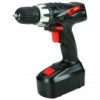Harbor Freight Tools 62873 User Manual - Page 9
Troubleshooting
 |
View all Harbor Freight Tools 62873 manuals
Add to My Manuals
Save this manual to your list of manuals |
Page 9 highlights
Troubleshooting Problem Tool will not start. Possible Causes 1. No power at outlet during charging. 2. Internal damage or wear. (Carbon brushes or switch, for example.) Performance 1. Accessory dull or damaged. decreases over time. 2. Carbon brushes worn or damaged. Excessive noise Internal damage or wear. (Carbon or rattling. brushes or bearings, for example.) Overheating. 1. Forcing tool to work too fast. 2. Accessory misaligned. 3. Accessory dull or damaged. 4. Motor vents clogged with dust. Likely Solutions 1. Check power at outlet. If outlet is unpowered, turn off tool and check circuit breaker. If breaker is tripped, make sure circuit is right capacity for tool and circuit has no other loads. 2. Have technician service tool. 1. Keep accessories sharp. Replace as needed. 2. Have qualified technician replace brushes. Have technician service tool. 1. Allow tool to work at its own rate. 2. Check and correct accessory to fence and/or table alignment. 3. Keep cutting accessories sharp. Replace as needed. 4. Wear ANSI-approved safety goggles and NIOSH- approved dust mask/respirator while blowing dust out of motor using compressed air. Follow all safety precautions whenever diagnosing or servicing the tool. Disconnect power supply before service. Item 62873 For technical questions, please call 1-888-866-5797. Page 9













